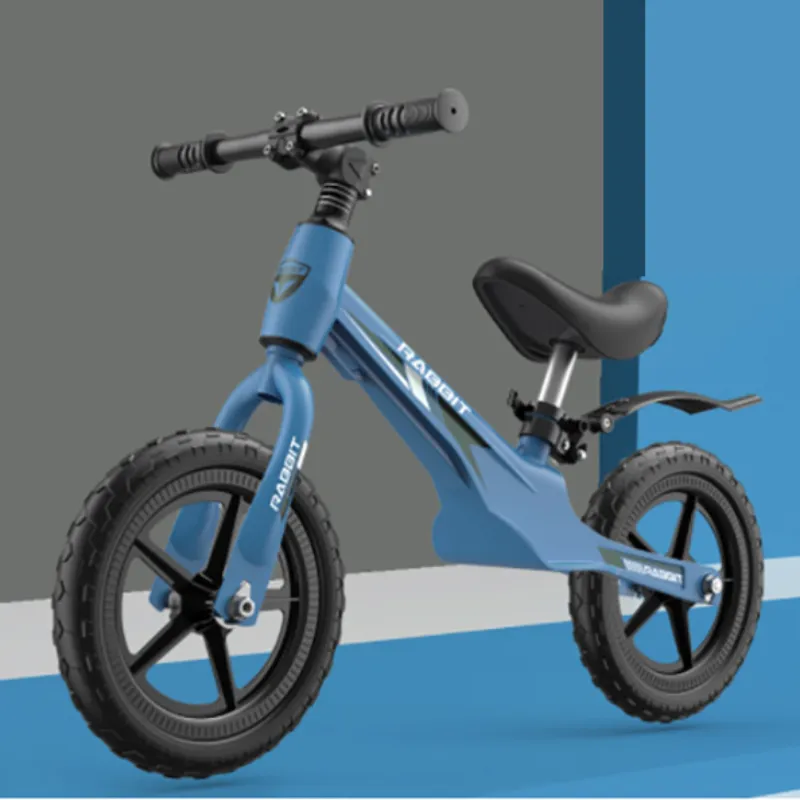Oct . 17, 2025 09:50 Back to list
Scooter for Kids - Safe, Adjustable, LED Wheels, Foldable
A Field-Tested Look at a Toddler Balance Bike That Actually Helps Kids Ride
If you're hunting for a genuinely safe and sturdy scooter for kids, I’ve spent the last few months talking with retailers, testing samples, and—importantly—watching toddlers do what toddlers do. The product that kept popping up was the “Children's Balance Bike Children's Treadless Scooter Scooter Bike,” built in China and clearly aimed at the 18–48 months sweet spot. In fact, the first thing parents commented on was the simple, tool-light adjustability: seat from 28–37 cm, handlebar 47.6–50.4 cm. That’s not marketing fluff; it’s what makes the learning curve, well, less curvy.

Where the market is heading
Industry buyers tell me balance bikes now outsell tricycles in many urban stores. Parents want lightweight frames, low-maintenance parts, and—surprisingly—clean design that doesn’t scream “toy.” Regulatory expectations have tightened too: brands increasingly seek EN 71 and ASTM F963 compliance even for entry-level models. And yes, sustainability matters: powder-coated frames and recyclable packaging are becoming table stakes.
Core specs at a glance
| Parameter | Children’s Balance Bike (this model) | Notes |
|---|---|---|
| Recommended age | 18–48 months | Based on rider height/coordination |
| Seat height | 28–37 cm (adjustable) | Quick clamp or hex—varies by batch |
| Handlebar height | 47.6–50.4 cm | Comfort bar with end caps |
| Frame | Steel or alloy (order-dependent) | Weight ≈ 2.8–3.5 kg; real-world use may vary |
| Wheels/Tires | EVA foam (no-flat) or air tire option | EVA = lighter, lower maintenance |
| Max rider weight | ≈ 25–30 kg | Common rating for this category |

How it’s built: materials, methods, and testing
- Materials: high-tensile steel or lightweight alloy frame; EVA or pneumatic tires; PP/TPR grips with rounded end caps.
- Process: tube cutting → TIG welding → surface finishing → powder coating → assembly → QC torque/fit checks.
- Testing (typical factory targets): handlebar fatigue ≈ 50,000 cycles; drop test from 40–50 cm on multiple axes; salt-spray ≈ 24–48h on coated parts.
- Service life: about 3–5 years with ordinary family use; rental fleets may rotate annually.
- Compliance options: EN 71-1/-2/-3 and ASTM F963 toy safety; ISO 8098 guidance for young children’s bicycles; CPSIA lead content limits.
Real-world applications (and what parents say)
Scenarios: preschool playgrounds, bike-shop starter bundles, birthday gifts, and even hotel kids’ clubs. Many customers say the no-pedal format lets their kids “find balance faster.” One retailer told me returns dropped after they switched to EVA tires—no flats, fewer tears. To be honest, that’s half the game.
Customization options
OEM paint codes, logo decals, saddle foam density, handlebar width, wheel material, and packaging (retail box vs. mailer). MOQ varies, but around a few hundred units is common.

Vendor snapshot: comparing scooter for kids suppliers
| Vendor | Origin | Lead Time | Customization | Certs (on request) | Price (FOB) ≈ |
|---|---|---|---|---|---|
| Yanline (this model) | China | 25–35 days | Paint, tires, decals, box | EN 71, ASTM F963, CPSIA | Mid-range |
| Vendor A | China | 20–30 days | Basic color/logo | EN 71 | Budget |
| Vendor B (specialist) | EU/Asia | 35–50 days | Wide OEM/ODM | EN 71, ISO 8098 | Premium |
Case notes from the field
A preschool chain in Melbourne piloted 12 units: after three months, grips showed minor wear but frames and hubs stayed tight; downtime was essentially zero. A suburban bike shop bundled this model with a “first-ride” class; 7 of 10 kids transitioned to pedals within six weeks. Small sample, yes, but the pattern repeats elsewhere.
Bottom line
If you want a durable, low-maintenance entry into balance riding, this model checks the boxes: adjustable fit, lightweight feel, and sensible compliance pathways. It’s not the flashiest, but it’s the one parents keep—and that matters more than a box-fresh wow.
Authoritative references
-
Discover Top E Bike Brand Insights, Specs & Future Trends | Yanline Bike
NewsNov.24,2025
-
Green E Bike – The Future of Sustainable Urban Mobility
NewsNov.24,2025
-
Ruffian eBike: Durable, Efficient Electric Bikes for Modern Mobility
NewsNov.23,2025
-
Comprehensive Guide to the Global E Bike Market and Future Trends
NewsNov.23,2025
-
Understanding Electric Bicycle Range: A Complete Guide for Smarter E-Bike Use
NewsNov.22,2025
-
Ceron Electric Bike – Efficient, Sustainable Urban Mobility Solutions
NewsNov.22,2025
-
Discover the Benefits and Innovations of Go Ebike | Sustainable Urban Mobility
NewsNov.22,2025




